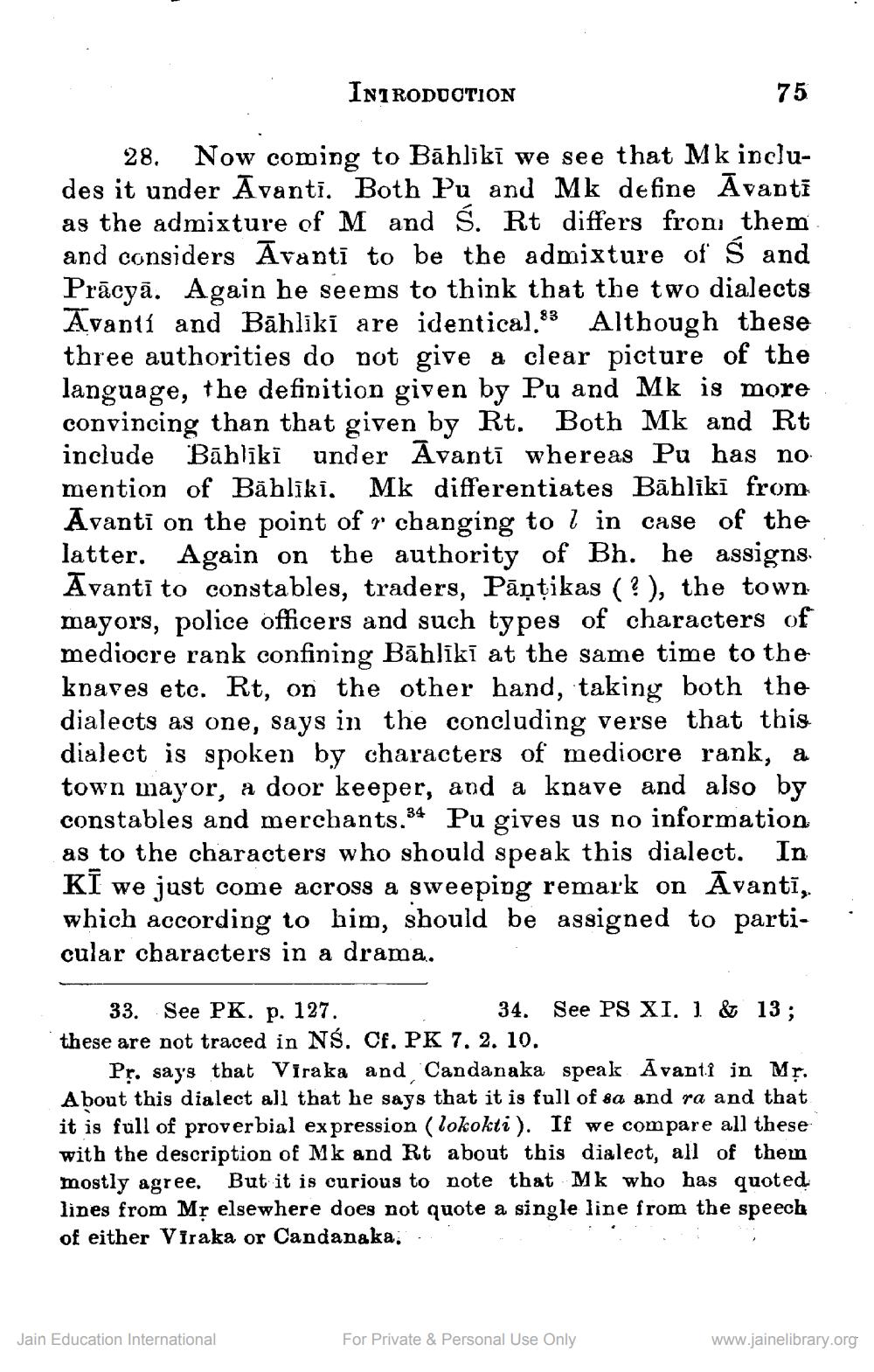________________
INTRODUCTION
75
28. Now coming to Bāhlikī we see that Mk includes it under Avanti. Both Pu and Mk define Avanti as the admixture of M and Ś. Rt differs from them and considers Avantī to be the admixture of Ś and Prācyā. Again he seems to think that the two dialects Avanti and Bāhliki are identical.83 Although these three authorities do not give a clear picture of the language, the definition given by Pu and Mk is more convincing than that given by Rt. Both Mk and Rt include Bābliki under Avantī whereas Pu has no mention of Bäbliki, Mk differentiates Bāblikī from Avanti on the point of r changing to l in case of the latter. Again on the authority of Bh. he assigns. Avanti to constables, traders, Pāņtikas (?), the town mayors, police officers and such types of characters of mediocre rank confining Bāhlikī at the same time to the knaves etc. Rt, on the other hand, taking both the dialects as one, says in the concluding verse that this dialect is spoken by characters of mediocre rank, a town mayor, a door keeper, and a knave and also by constables and merchants.34 Pu gives us no information as to the characters who should speak this dialect. In KĪ we just come across a sweeping remark on Avanti, which according to him, should be assigned to particular characters in a drama..
33. See PK. p. 127.
34. See PS XI, 1 & 13; these are not traced in Nś. Cf. PK 7. 2. 10.
Pr. says that Viraka and Candanaka speak Avanti in Mr. About this dialect all that he says that it is full of sa and ra and that it is full of proverbial expression (lokokti). If we compare all these with the description of Mk and Rt about this dialect, all of them mostly agree. But it is curious to note that Mk who has quoted, lines from Mr elsewhere does not quote a single line from the speech of either Viraka or Candanaka:
Jain Education International
For Private & Personal Use Only
www.jainelibrary.org




